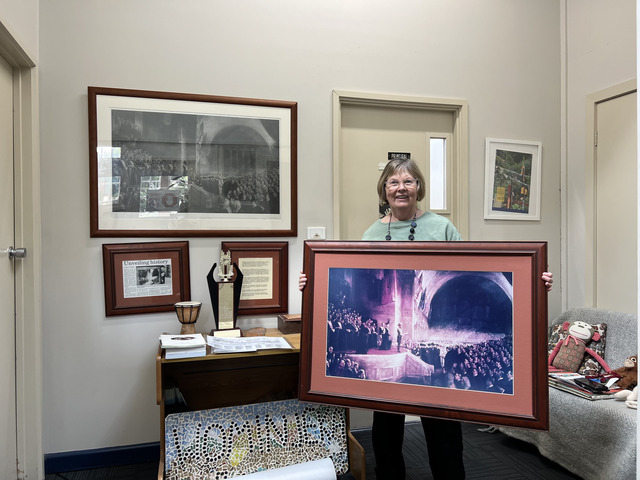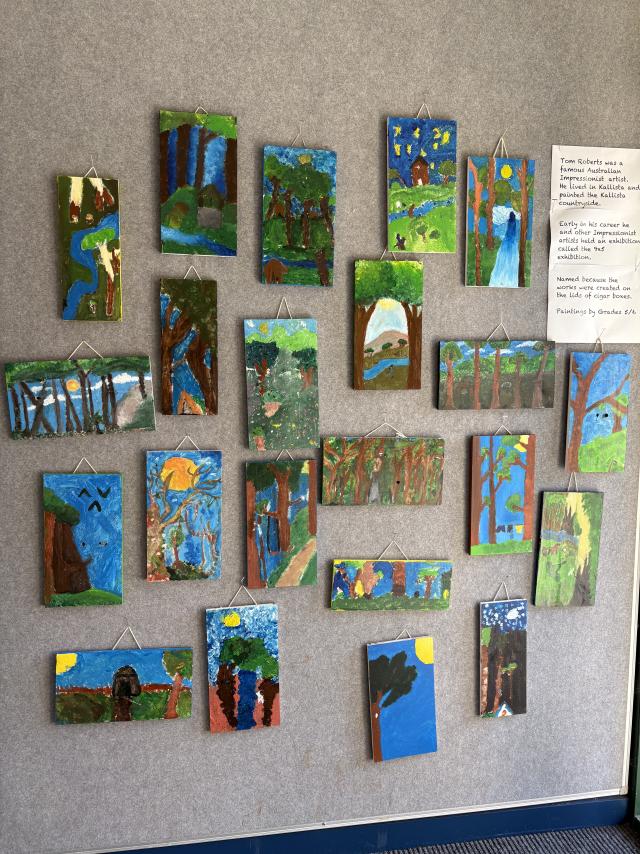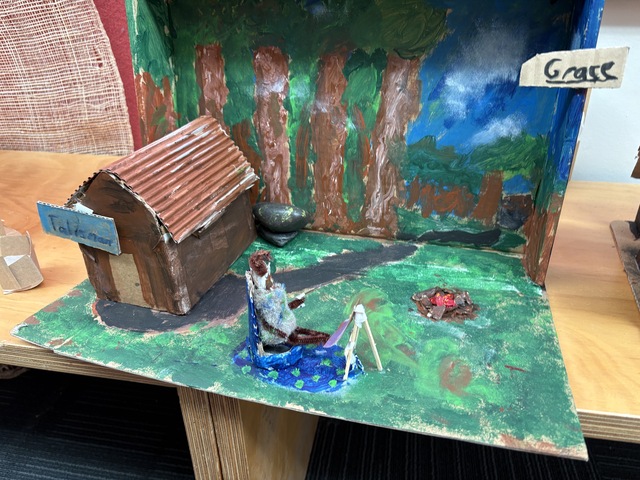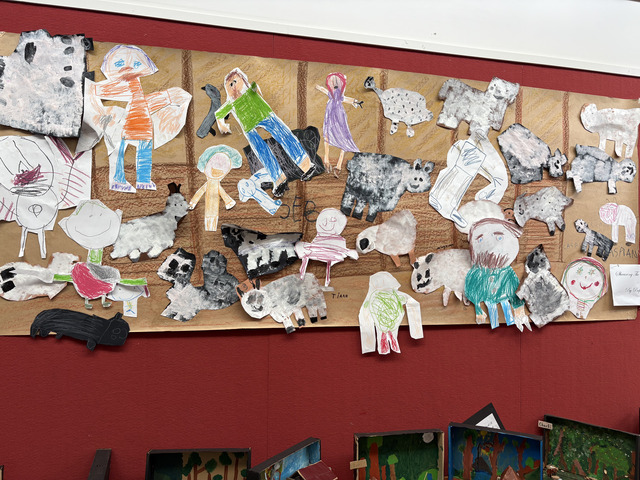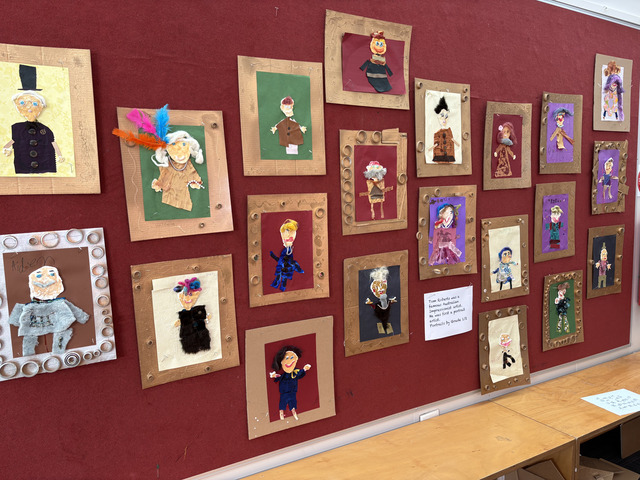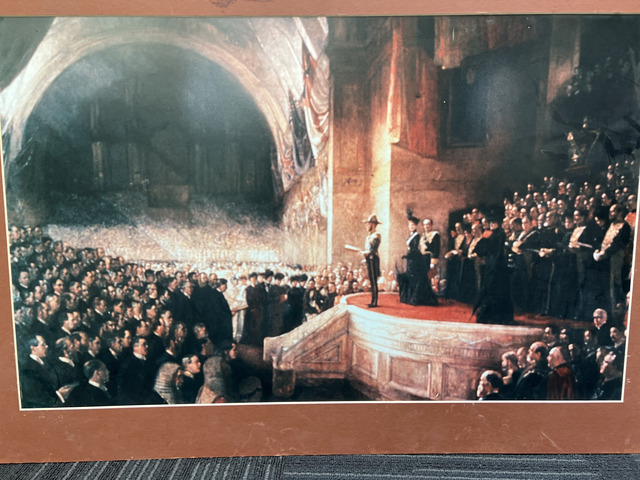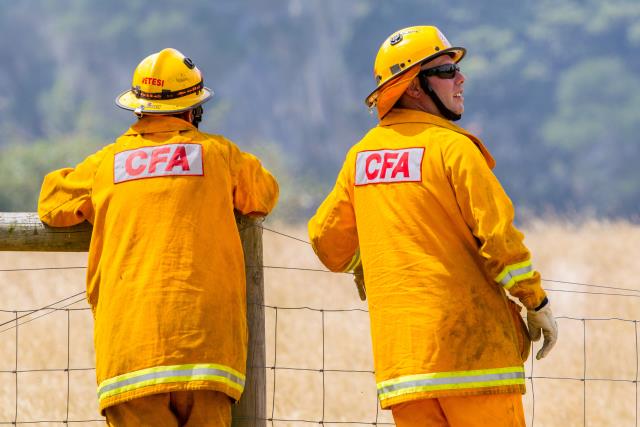Kallista Primary School students have been actively engaging in a hands-on and meaningful exploration of one of Australia’s most renowned artists, Tom Roberts, as part of their learning about the history of Kallista for the centenary celebration that took place a few weeks ago.
The students immersed themselves in Roberts’ art, discovering how his paintings not only reflected Kallista, but also captured something deeper about Australia’s identity.
For the town’s centenary celebrations, the school decided to use Roberts’ iconic works as a way to connect Kallista’s history with a broader cultural story about the nation – and for many students at Kallista Primary School, Roberts’ story became a powerful source of local pride.
The school’s visual arts teacher, Georgie Ruzyla, who has been teaching at Kallista Primary for over two decades, shared that the students were eager to create something meaningful for the town’s centenary.
“Exploring Tom Roberts’ art felt like the perfect way to celebrate our community’s history,” she said.
In every lesson, she guided her students through Roberts’ distinctive approach to art, helping them understand how he used light to bring the Australian landscape to life and how he captured the essence of everyday rural life.
The students studied some of Roberts’ most famous works, like Shearing the Rams and Bailed Up (1895), and learned how he captured both the beauty of the land and the hardworking people who lived on it.
“Roberts wasn’t just an artist – he was a storyteller, when the kids see his paintings, they’re seeing their own community in those works. It’s a way for them to connect with the past and the land they walk on every day,” Ms Ruzyla said
“Some of the kids live on Tom Roberts Road. They walk past the house he built. They can picture the land he painted, and it becomes real to them. History isn’t just something they read about in books – it’s alive for them. It’s something they can touch and feel.”
This kind of personal connection between art and community is central to the school’s philosophy.
“Learning about Roberts helps the kids see that art isn’t just something you hang in a gallery,” Ms Ruzyla said.
“It’s part of their story. His work is about a shared history. It’s about people, places, and experiences that are all tied to where they live.”
Tom Roberts, born in Dorchester, England, in 1856, was a key figure in the Heidelberg School, Australia’s early art movement that helped shape Australian Impressionism.
In the late 1880s, Roberts, alongside artists like Arthur Streeton and Frederick McCubbin, created an art style that celebrated the natural beauty of Australia’s landscape and rural life – helping the country understand and appreciate its own identity as a newly federated nation.
Although some of Roberts’ most famous works, like Shearing the Rams (1890) and The Big Picture (1903), are housed in galleries and museums across the country, his connection to Kallista runs deeper.
After a successful career in Europe, Roberts returned to Australia and eventually settled in Kallista, a place that would inspire some of his most beloved works – surrounded by the breathtaking Dandenong Ranges, Roberts found himself deeply connected to the land, and that connection shines through in his paintings.
One of the most significant parts of Roberts’ art that resonated with the students was his dedication to portraying Australia’s true character.
As a portrait artist, Roberts painted not only the famous figures of his time but also the everyday Australians who helped shape the nation.
His famous painting ‘The Big Picture’ – which depicts the first sitting of the Australian Parliament in 1901 – includes the likenesses of 269 people, including members of the Senate and House of Representatives, as well as the first Prime Minister, Edmund Barton.
The school’s historian and tutor, Margaret Brooks said ‘The Big Picture’ isn’t just a painting – it’s history.
“It shows how significant moments, like the opening of Australia’s first Parliament, were captured for future generations. And now, the students at Kallista Primary are able to feel that same connection to the past,” she said.
The students also had the chance to visit the places that inspired Roberts’ landscapes, like the stunning Dandenong Ranges, where he spent many of his later years.
They even got to see a replica of The Big Picture hanging proudly in their school – a gift to Kallista Primary after the original print had been lost for many years.
Roberts, who started from humble beginnings in Melbourne and went on to achieve great success, was a true pioneer.
He was one of the first to argue that Australia needed its own National Portrait Gallery, and he believed Australian artists should be capturing the essence of the country and its people.
His influence on portraiture and landscape painting is undeniable, and works like Shearing the Rams and Bailed Up are still considered major milestones in the development of Australian art.
According to the Australian Dictionary of Biography, Roberts faced struggles, despite his fame, particularly when working on The Big Picture. The immense scale of the painting, which depicted the first sitting of the Australian Parliament, took a toll on his health, especially his eyesight. But even in the face of adversity, Roberts remained committed to capturing that defining moment in Australian history.
Ms Brooks said for the students at Kallista Primary, the lessons they learned from Roberts were about more than just art – they were about community, history, and the power of local stories.
“By exploring Tom Roberts’ life and work, the students weren’t just learning about an important artist – they were connecting to the very essence of their home, a place rich with history and meaning,” she said.

